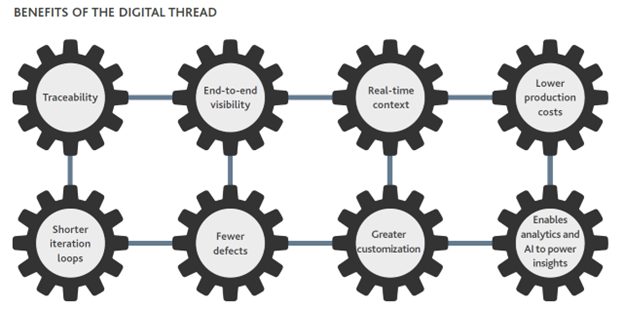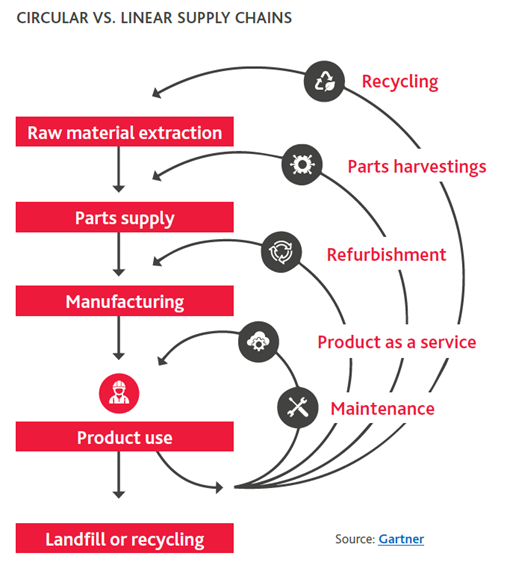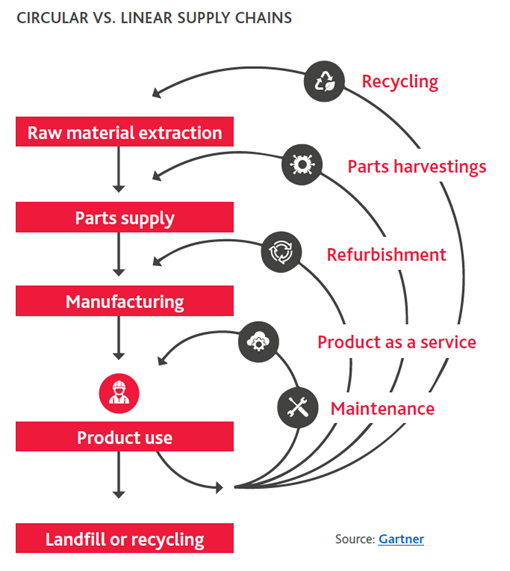Adapt now or brace for impact.
Global supply chains as we know them are changing. Near-constant disruptions have exposed the fault lines – and made it clear that the way supply chains are managed is evolving.
The volume of supply chain disruptions is more than a pandemic after-effect. It’s the downside of borderless commerce, outsourcing and offshoring – multi-layered interdependencies, greater supply chain complexity, and in turn, more unpredictability. Accelerated disruption has revealed systemic weaknesses in modern global supply networks: overreliance on single sources and geographies, insufficient manufacturing capacity and limited visibility. If these systemic weaknesses remain unaddressed, supply chains will continue to be roiled by uncertainty and unpredictability.
Supply Chain Disruption Drivers
- COVID-19
- Trade Policy
- Port Congestion
- Russia-Ukraine War
- Economic Volatility
- Labor Unrest
- Climate Change & Natural Disasters
- Materials Shortages
- Resurgent Oil Prices
How can supply chain leaders succeed amid constant disruption? By following the four new rules of global supply chain management.
The new rules of supply chain management
Rule #1: Optionality isn’t optional.
Efficiency should not take priority over resilience, which means that the era of relying on single sources and just-intime inventory strategies are over. Too much redundancy, however, can cause supply chains to sprawl, lead to waste and compromise agility. Lean manufacturing isn’t dead – but more optionality needs to be built in.
HOW TO PLAY BY THE RULES
Evolve inventory strategy.
Shift to dual-sourcing models and keep safety stock on hand to avoid fulfillment issues, particularly for goods in high demand or that are prone to shortages. Companies should also invest in advanced demand forecasting capabilities so they can proactively adjust their inventory strategies to emerging demand signals.
Regionalize supply networks.
Find new suppliers close to production facilities and key markets to limit the distance that goods need to travel, reduce tariff exposure and improve speed of service.
Rationalize product portfolios.
Prioritize products that are most profitable and driving the highest revenue, while discontinuing or reducing scope for less profitable and lower-volume products.
Prioritize your most valuable customers.
Not all your customers should receive the same level of service. Prioritize your most profitable and highest-revenue, driving customers. Reserve safety stock exclusively for their orders and devote more customer service resources to them than smaller customers.
Rule #2: Digitize for agility and visibility.
Most companies are aware of the benefits they can achieve by investing in digital supply chain solutions, but economic and operational disruption will force them to make difficult choices. Organizations may not be able to continue committing large amounts of capital to long-term digital initiatives, and projects in motion may need to be paused to free up cashflow. Businesses should reprioritize digital initiatives that provide quicker wins to balance the need to free up capital while continuing to drive supply chain agility.
HOW TO PLAY BY THE RULES:
Realign digital priorities to near-term business goals.
Reassess all digital supply chain initiatives against immediate business needs to determine which products to pause, discontinue or reprioritize. Projects that can quickly reduce costs, streamline processes or enhance supply chain visibility should take first priority.
Build rapid scenario modeling capabilities.
Businesses should build a digital replica – or digital twin – of their supply chain to quickly model the consequences of network changes or disruptive events. Scenario modeling should be an integral part of all supply chain planning and inform prioritization of your digital initiatives.
Collaborate on innovation plans.
In addition to modeling the impact of changes to their own operations and cross collaborating internally with all supply chain functions, companies should source input from their vendors, suppliers and other strategic relationships when evaluating any digital platform or tool to confirm compatibility, process changes and mutual benefits.
Enhance visibility.
Tools that help capture and analyze data should be prioritized investments to navigate disruption. Businesses should not only look to capture and analyze data from their own supply chain but from their customers and vendors as well so they can spot disruption or demand signals in real-time and adapt swiftly. The ultimate goal is to build a digital thread – creating end-to-end supply chain visibility and facilitating intra- and inter-organizational communication.

Rule #3: Supplier relationships must evolve from transactional to collaborative.
Collaboration between supply chain constituents is the foundation on which both efficiency and resilience are built. Increased volatility will require more collaboration between all supply chain participants — customers, suppliers, partners and other stakeholders – to accelerate issue resolution and respond to demand shifts. Companies will need to rethink how they work together while still protecting their business interests.
HOW TO PLAY BY THE RULES:
Invest in due diligence.
Incorporate reputation and resilience key performance indicators—including sustainability and financial health metrics—into supplier selection and ongoing evaluation processes.
Treat suppliers like collaborators, not vendors.
Consider adopting relational contracts that set out mutual goals and governance structures for ongoing interest alignment rather than relying on punitive measures—an approach used by companies like Dell, Intel and AstraZeneca. Evaluate opportunities to invest financially in critical suppliers to increase supply chain resiliency.
Share accountability.
Proactively nurture relationships with suppliers to build trust and keep the lines of communication open in good times and bad. Jointly set goals and success metrics and regularly review progress against them.
Collaboratively develop information sharing protocols.
The goal is to reach collective agreement on what “need to know” information should be shared with supply chain participants. Do not expect external entities to share information with your organization that you would be unwilling to reciprocate.
Embrace “coopetition.”
The economies of scale that can be achieved with competitors are far greater than those that can be achieved alone. Several studies indicate that horizontal supply chain collaboration between competing companies – particularly in logistics operations – can deliver significant cost and operational efficiencies.
Rule #4: Sustainable supply chains are circular supply chains.
Achieving a sustainable supply chain will require more from management than emissions reduction plans or ethical sourcing – that’s just the start. Products and their inputs can no longer simply be made, used, and discarded. Circular supply chains—where materials are reused, reimagined and repurposed—will become the standard for sustainability. While not all product waste can be reused, identifying opportunities to better approximate a circular model can help organizations achieve sustainability goals, mitigate their impact on the planet and improve the bottom line.

HOW TO PLAY BY THE RULES:
Evaluate existing waste practices and remanufacture opportunities.
The shift to circularity begins with an audit of existing waste, reuse, and recycling practices and outcomes. Data will drive the transition to circular supply chains. Understanding how circular product disassembly and remanufacture would look for your organization is a critical early step. Partially or fully localized production and input standardization will expedite those processes.
Preempt Scope 3 emissions regulations. Restrictions on Scope 3 carbon emissions – the gas produced by the entities with which an organization engages throughout the value chain – are on the horizon. This category, the largest share of emissions for most enterprises, includes emissions produced during waste disposal by third parties. Limiting waste volumes through reuse and setting emissions reductions targets for suppliers can help an organization whittle them down over a more feasible timeline – before regulators demand it.
Allow circularity to spur innovation. The transition to a circular supply chain can drive R&D. Rethinking the origins and composition of product inputs can be fertile ground for product innovation and production efficiencies, while limiting negative externalities and driving massive economies of scale.
Identify collaborators to advance your mission and objectives. The transition to circularity requires skilled waste collection, transport, and processing collaborators, among other entities. Don’t go it alone – but be discerning about the firms and organizations you work with. The right collaborators will help your organization maximize its sustainability outcomes, take advantage of any cost-cutting opportunities and comply with reporting standards and requirements.
Follow the new rules to drive value. Businesses that can integrate these rules into their supply chain management strategies will have an advantage over the competition. They’ll be more efficient, resilient and agile than their peers, and as a result, better able to adapt to disruption and seize emerging opportunities.






